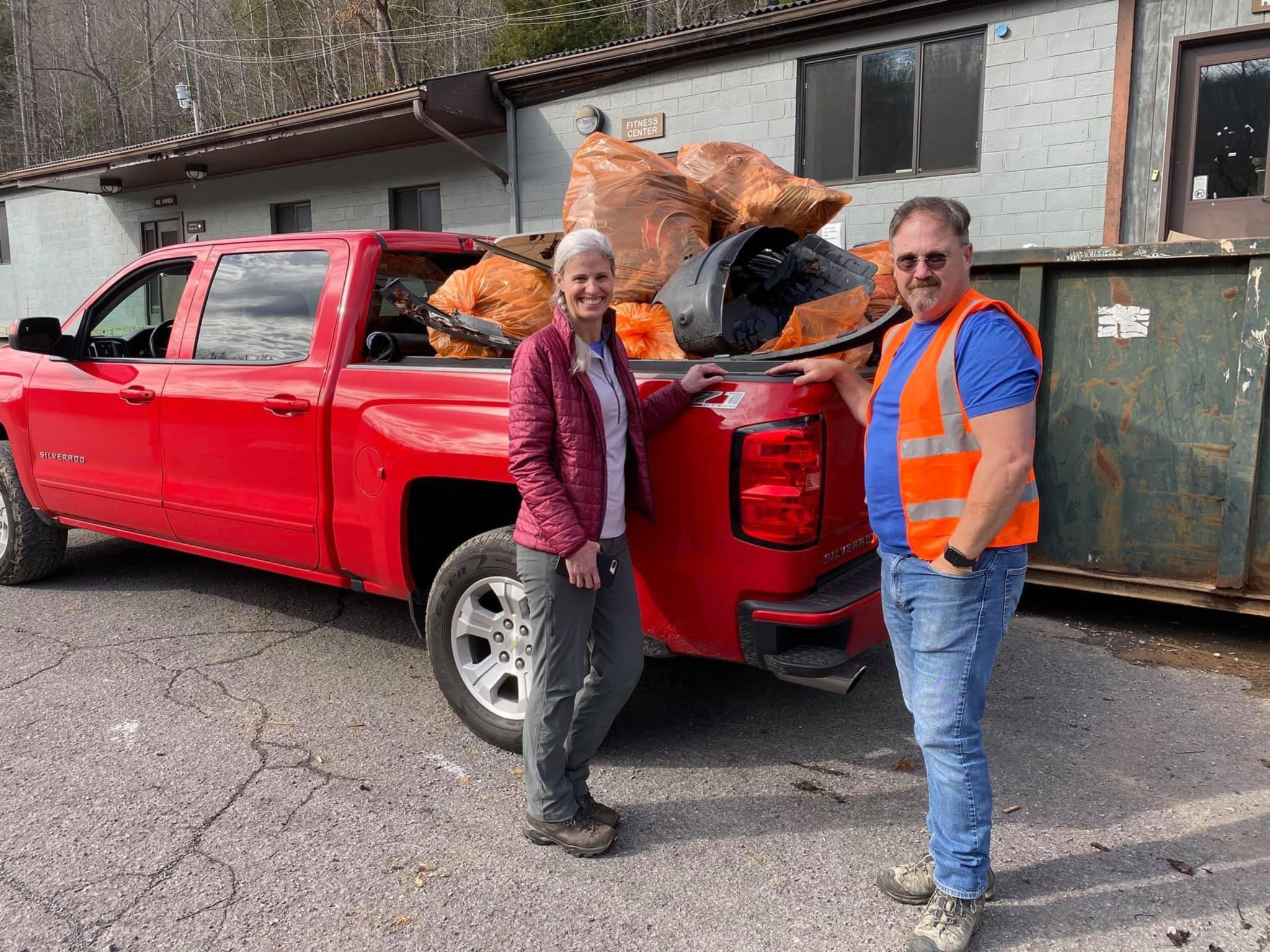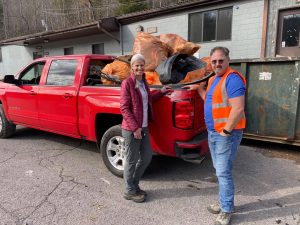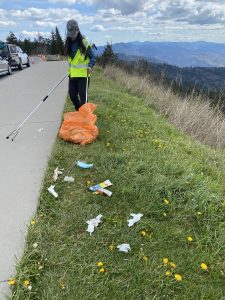
How many pieces of litter or trash do you pick up in a day? A week? A month? Imagine having organized 15 whole litter cleanup days involving large groups of people in 2021 thus far.

That’s what Jerry and Darlene Willis have done. Based in west Knoxville, the pair is saving Great Smoky Mountains National Park, one piece of litter at a time. They hold a cleanup every month — weather permitting — in different parts of the park like Clingmans Dome Road, the Foothills Parkway, or along the “Spur” between Gatlinburg and Pigeon Forge, Tennessee.
Jerry grew up in South Georgia and spent many summers in East Tennessee visiting family. Darlene grew up in Walland, Tennessee, right next to the park, where the couple lived for a time. They don’t mind “talking trash” when it helps GSMNP.
“We focus on litter as well as other negative impacts of growing visitation like graffiti,” said Jerry who, as founder and president of Save Our Smokies (S.O.S.), has formed partnerships with other park gateway communities addressing litter, among them Keep Sevier Beautiful and Keep Blount Beautiful.
Park visitation reached a record-breaking 12.5 million in 2019, and even during the pandemic, the numbers for 2020 reached 12 million. Caring for and sharing some of our nation’s best treasures with this many people means that litter removal is vital to the ecological health and beauty of the park.

“It’s a rewarding and important stewardship option that anyone, of any age, can assist with,” said Sheridan Roberts, parkwide volunteer coordinator. “With the onset of COVID, many frontline volunteers chose to step away from indoor, highly interactive work with visitors. But as time went on and they wanted to get back to work, we introduced a new Parkwide Litter Patrol Program. This allowed experienced, long-time volunteers to safely step back into stewardship.”
Litter Patrol volunteers work independently and in pairs to monitor and remove trash from high-visitation sites like trails, waterfalls, overlooks, and historic structures. Because they are at outdoor worksites and set their own schedules, these vital helpers don’t necessarily have to work at crowded times or be close to visitors.
Since 2015, the park has hosted well over 26,000 Litter Patrol volunteers, including individuals and groups. Churches, schools, summer camps, Scouts, 4-H Clubs, college students, senior citizen groups, and local businesses have all participated, Roberts said.
Roberts first connected with the Willises on a cleanup at Fontana Lake last year. Jerry and Darlene spoke of their history and desire to do more to support the park. Roberts followed up, and S.O.S. has become a key partner in addressing the challenge of litter removal in and around the Smokies.
“To date, at least 265 Save Our Smokies Volunteers have dedicated 1,343 energetic hours to litter removal,” she said. “They’ve identified trash pile-up in less-visited sections of the park, where it goes unseen. They’ve removed dryers, mattresses, garbage cans, tires… This group is extremely well-organized and has even brought their own signage and safety equipment.”

A couple of years ago, Jerry and Darlene became members of the 900-miler club, meaning they have now hiked all the park’s trails. That designation served to inspire their stewardship commitment.
“Each time we would finish a trail, there was such a sense of accomplishment as well as rejuvenation for my soul,” Darlene recalled. “To be able to give back to the park that really has given so much to me is very humbling. We have a lot of hikers as volunteers, and that camaraderie, sharing a common goal, is huge.”
Litter Patrol volunteerism ties in well with the park’s focus on educating visitors in Leave No Trace practices. NPS maintains bear-resistant dumpsters at campgrounds and picnic areas where visitors are expected to have food waste. Food scraps and garbage can attract bears and other wildlife near roadways, trailheads, and other developed areas. To reduce this risk, trash receptacles are limited in these areas and visitors are expected to pack out any trash from their vehicles or packs. It doesn’t always happen.
“By removing litter and graffiti, volunteers can directly help the National Park Service preserve and protect the natural and cultural resources that have been entrusted to us all,” Jerry said. “It’s an amazing feeling to see an area that’s been littered and, after you finish, it’s clean and beautiful again.”
Sadly, he said, these areas don’t remain clean for the long-term.
“Hopefully as more visitors see us out there picking up the litter, more will get involved in cleanups,” said Jerry. “And the biggest hope is that someone who litters will see our hard work and think about it before throwing trash down again.”
Subscribe to get the latest posts sent to your email.
The Great Smokies Welcome Center is located on U.S. 321 in Townsend, TN, 2 miles from the west entrance to Great Smoky Mountains National Park. Visitors can get information about things to see and do in and around the national park and shop from a wide selection of books, gifts, and other Smokies merchandise. Daily, weekly, and annual parking tags for the national park are also available.